In my most recent posts, I’ve defined shared reading, explained how it’s different from a readaloud, and given some tips for choosing great texts for shared reading.
Now it’s time to really dig in deep! In my next few posts, we’re going to talk more about the “what” and “how” of shared reading.
Today’s focus is fluency. Shared reading presents a great opportunity to teach fluency because…
- We can model fluent reading as we read the text aloud to students
- Our students can join in and practice fluent reading through choral reading (and occasional echo reading)
- Our students can SEE the print, so we can easily discuss fluency-related topics like punctuation marks
- Shared reading often involves reading and rereading a single text, which helps develop fluency
In this post, I’ll suggest some fluency strategies to teach during shared reading (for K-2), provide a freebie, and share my favorite materials for teaching fluency (like this book)!
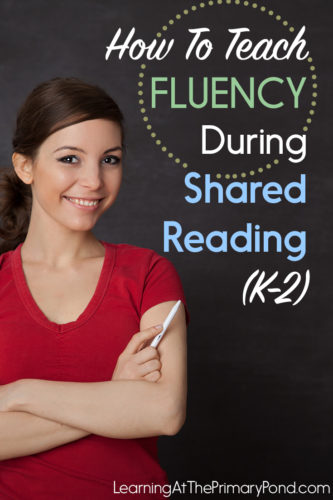 Photo Credits: oleksa, Shutterstock
Photo Credits: oleksa, Shutterstock
What Is Fluency?
First of all, what is fluency? It’s not just reading quickly!
Fluency includes:
- Accurate word recognition (reading correctly)
- Automatic word recognition (reading the vast majority of words without having to sound them out)
- Prosody (reading with expression)
- Phrasing (reading in appropriate phrases, rather than word by word)
- Stress (emphasizing certain words rather than others)
- Attention to punctuation (pausing and changing voice appropriately)
- Reading pace
Reading fluency is both an indication of comprehension AND a pathway to comprehension.
It’s an indication of comprehension because reading fluently involves reading with expression, phrasing, etc. that reflects the meaning of the text.
It’s a pathway to comprehension because developing fluency, particularly accuracy and automaticity, can free up the reader’s attention to comprehend the text.
So fluency is important. But you probably already knew that, since you’re reading this post! 🙂
Fluency Strategies to Teach During Shared Reading
Many instructional activities help develop fluency, including teaching phonics and sight words so that kids can decode words in the first place.
But for the purposes of this post, let’s focus mostly on prosody, phrasing, stress, and attention to punctuation.
Here are some strategies—and activities—you might teach primary students during shared reading to help develop these particular fluency skills. I did my best to rank them from easier to more difficult:
Strategy #1: Read like you are talking, not like a robot!
This is usually the first fluency strategy I teach my Kindergarten students (but older kiddos may need to learn it too).
I take out a big book that I’ve already read once or twice to students. I say, “I’m going to reread this page, but I’m going to do something wrong. Listen carefully to see if you can figure out what I’m doing that’s not quite right.”
Then, I read the page in my best robot voice. 🙂 Afterward, I ask students, “What did you notice?” I listen to their ideas and point out that my reading sounded like a robot. I explain that we want to make our reading voices sound like we are talking. We don’t want to sound like robots! I then reread the page and have students join in to help me read like a “human.”
I revisit this quick lesson regularly (by reading in a monotone voice and having students correct me). I always follow it up by modeling proper fluency and having students join in.
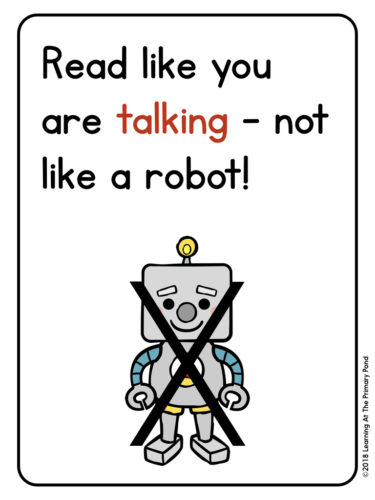
Strategy #2: Make your voice match what is happening in the story.
Once you and your students have read a story once, revisit it with the purpose of teaching this strategy. Before you read, have your students help you make a “fluency plan.” Page through the story, showing them the pictures. Ask, “In this part of the story, how should my voice sound? Why?” You can also discuss how different characters’ voices should sound different (and reflect character emotions).
After you’ve made your plan, you might do some quick modeling and then invite students to help you practice this strategy as you reread.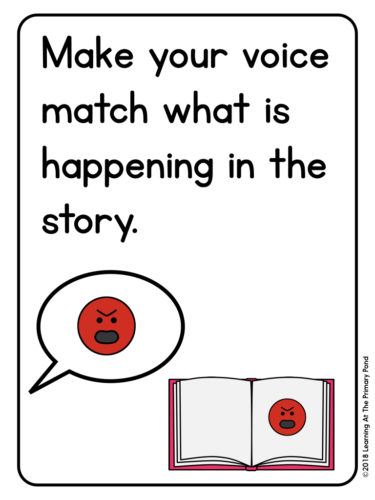
Strategy #3: Match your voice to the ending punctuation.
When we get to a period, our voice goes down at the end. When we get to a question mark, our voice goes up. When we see an exclamation point, we read with lots of emotion. And our eyes skip ahead to check the ending punctuation mark so we can read each sentence accordingly!
If you want to focus on ending punctuation during shared reading, you can have students go through a familiar text and help you mark the punctuation marks (perhaps with highlighting tape or sticky flags). Then, begin reading together. Since the punctuation marks are highlighted, it’ll be a bit easier for students to attend to them as they read.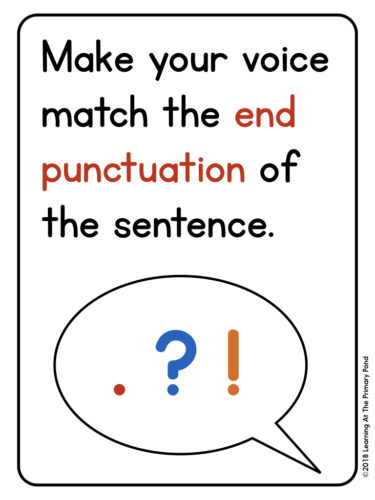
Strategy #4: Match your voice to the genre of the text. Imagine that you are the author reading the text!
In some ways, I think expression can be easier and more fun to teach with fiction. We pretend to be the characters for the dialogue parts and storytellers for the narration parts.
But expression still matters when students read nonfiction!
When we are practicing reading nonfiction with expression, I ask my students to imagine that they are the authors of the book. The topic of the book is obviously interesting to the author, and he/she wouldn’t read it aloud in a monotone voice! I also encourage them to pay plenty of attention to ending punctuation marks, as this will also affect the expression with which they should read.
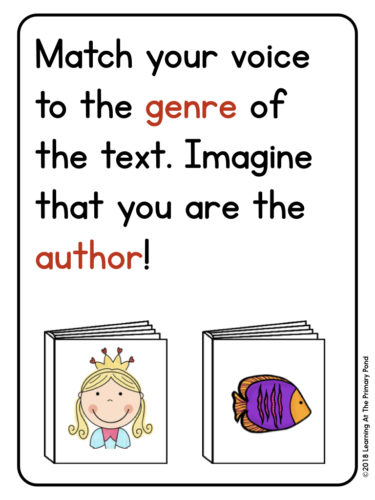
Strategy #5: Pause at commas and periods.
I teach my students that a period is a small stop, and a comma is an even smaller stop! Again, just like with Strategy #3, you can have students help you highlight these punctuation marks prior to rereading a text.
Another fun thing to do is play “These don’t belong here!” You can write commas and periods on sticky notes and allow a few students to place them wherever they’d like on a few pages of your shared reading book. Then, read aloud and show them how different (and silly) the text sounds with those additional pauses.
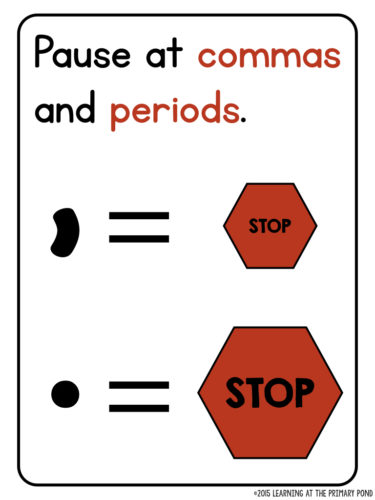
Strategy #6: If a word is tricky for you, slow down to figure it out. Then, speed back up!
Do you have some students who tend to speed through a text, glossing over tricky words? Something I do frequently during shared reading is say, “Let’s imagine that there’s a word on this page that is tricky for me. Watch quietly while I show you what I do.” I model how I read the sentence, slow down to figure out the word, and then restart the sentence to get back to my original reading pace. I tell students that it’s a good thing to slow down sometimes. Focusing on fluency doesn’t mean that we want our students to read so quickly that they don’t stop to problem-solve!

Strategy #7: Scoop up words and read them in phrases.
This is one of the more advanced fluency strategies I teach, and I like to teach it with shared reading texts that I can mark up (i.e., articles or printable passages).
The purpose of teaching students to read words in phrases is a) to discourage word-by-word reading in favor of smoother reading, and b) to facilitate meaning making. Reading words in phrases requires the reader to think about which words “go together.”
To work on this strategy, I have students watch me (or help me) mark up a very short text before I read it. Once I’ve modeled reading in phrases, we all practice together. I also model the opposite to show them what not to do (reading word-by-word).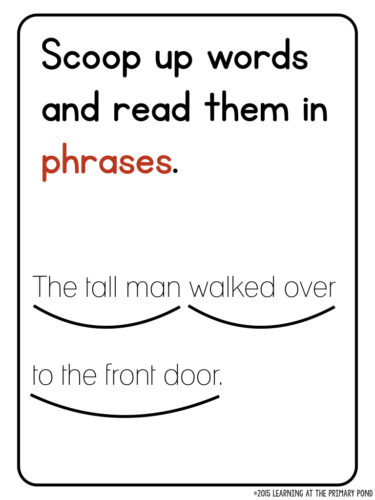
Also, teaching fluency during shared reading goes far beyond just teaching these strategies. We practice fluency during just about every shared reading experience. I model fluency as I read to them, we practice it together as the kids join in with me, and I’m constantly pointing out how my voice changes as I read different parts of a text and different texts. The act of reading and rereading the same text, as we do during shared reading, develops fluency in itself.
Want to download this list of fluency strategies plus all of these fluency strategy visuals? Fill in your information in the boxes below, and they will be emailed right to your inbox!
Must-Have Materials for Teaching Fluency
The nice thing about fluency is that it doesn’t require a ton of “stuff.” It mostly just requires some great texts—ones that students will enjoy reading over and over again!
One new resource that is absolutely a MUST-HAVE for teaching fluency is Rasinski & Smith’s The Megabook of Fluency! This book has a ton of fluency activities that can be used in shared reading and beyond.
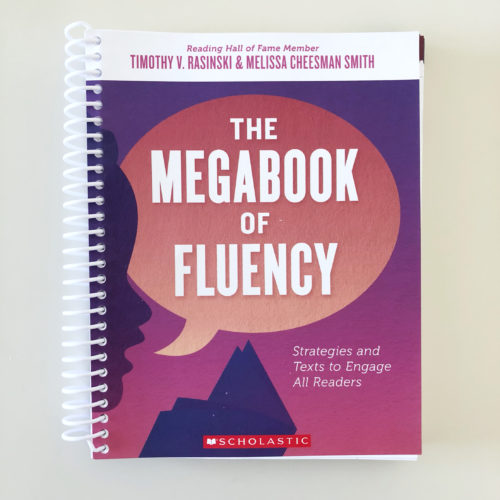
In exchange for sharing about this book, I received a free copy from Scholastic. And BOY did I hit the jackpot!!
This book contains:
- Fluency activity ideas (you can incorporate many of them into shared reading)
- Printable activities (like “Phrasing Nonsense,” where kids insert random punctuation marks into the alphabet or a series of numbers and then read them with the appropriate expression)
- Poems and other brief texts to read
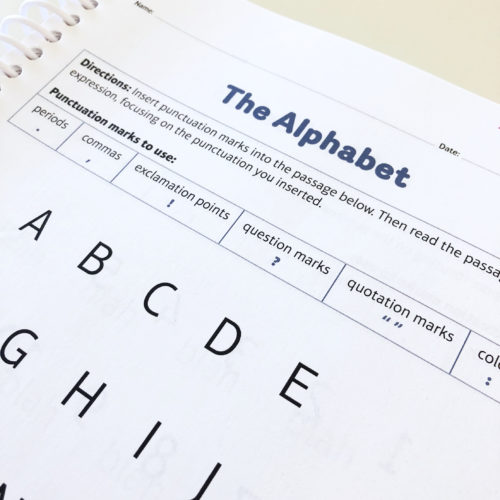
I’ve been using the activities with some of my summer school reading intervention kiddos, and they are in love! ? You can grab this book HERE!
A few of my other favorite materials for having kids work on fluency during other times of the day (i.e., guided reading or literacy centers) include:
- Whisper phones (so the kids can hear their own voices even when they are reading quietly)
- Tablets or other audio recording devices (kids can read / perform texts, listen back, and work to improve their fluency)
Conclusion
If you have a great idea for teaching fluency during shared reading, please share in a comment below! And don’t forget to grab those free fluency visuals, if you haven’t yet!
Happy teaching!

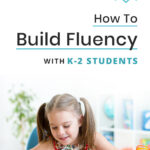
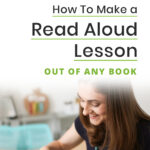

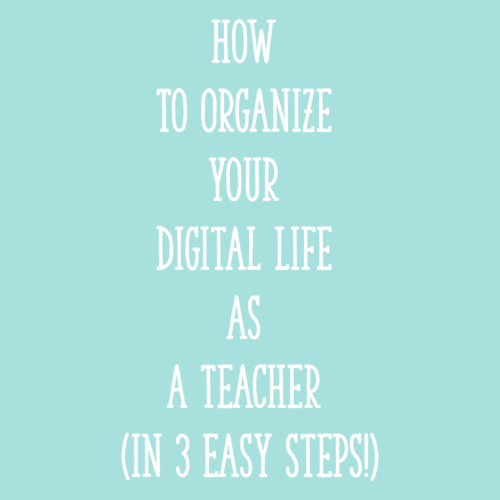
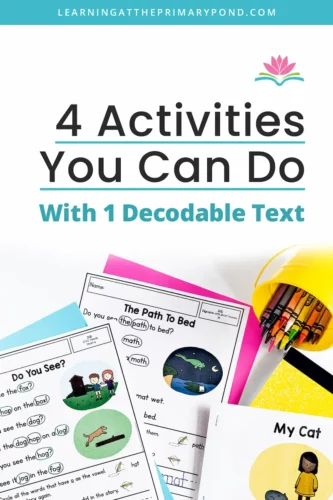







For second graders that are on or above grade level, do you recommend literacy stations or sustained independent reading?
Hey Ali! Great question – and I think it just depends on a lot of things: 1) How long is your independent work block? 2) Can your students sustain their attention for that long of a block, or would they also benefit from having a little break with something like partner reading? 3) Are your students practicing words, writing, and other literacy skills at another time of day? Literacy centers can be a great time for students to practice a variety of skills – but if they already have other practice opportunities built into your literacy block, then traditional centers… Read more »
Do you have some material in Spanish to teach fluency?
Hey! I have my Escaleras de fluidez here: https://www.teacherspayteachers.com/Product/Spanish-Reading-Fluency-Ladders-Escaleras-de-fluidez-1606127
Let me know if you have any questions! 🙂
Alison
Hi,
Do have the skill posters (shown above) available somewhere? TPT perhaps?
Thank you,
Lynn
Hi Lynn! Those are actually free! If you look in the post, there are little boxes where you can put your email address in to receive them. 🙂
Alison
These posters are amazing; thanks so much for the great ideas and amazing visuals!!